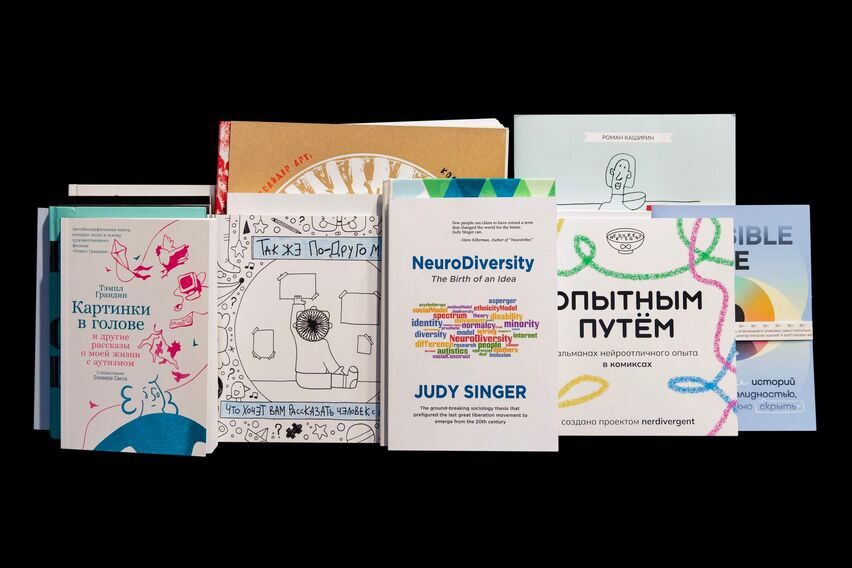A book collection that covers neurodivergence and the portrayal of neurodiversity in culture and art.
Neurodiversity. Book collection
- Date:
- from
7 Oct 2024
- Age restrictions
- 18+

Photo: Anna Zavozyaeva
Compiler
Vera Zamyslova is the curator of accessibility and programmes for people with neurodiversity at
Neurodiversity, both as a concept and a movement, is a relatively recent development. In 1998, autistic sociologist Judy Singer introduced the idea in her doctoral dissertation. This pioneering work was later published in 2004 under the title NeuroDiversity: The Birth of an Idea. Singer presents neurodiversity as a natural evolutionary process, closely tied to the rapid changes shaping the modern world. Our reality is transforming at an unprecedented pace, reshaping everything from cities and individual homes to the ways we communicate and choose our words.
A key challenge in Singer’s research is that, despite its nuanced and precise approach to addressing diagnoses, neurodiversity does not yet have a clearly defined pedagogical methodology. Consequently, a variety of recommendations have emerged, some focusing on programmes in museums and cultural institutions. One of the earliest methodological guides in Russia was published by the Garage Museum of Contemporary Art, where experts distilled years of experience with inclusive programmes and outlined the principles for their effective implementation.
An alternative perspective on methodology in our selection is presented in Sut` veshhej [The Essence of Things] (in Russian), both a reference and archive publication that attempts to examine artworks through bodily experience. The book draws on the practice of the Integrative Theatre Studio Krug, a performing group that has existed for over thirty years at the intersection of inclusion and culture.
The second part of our selection focuses on the historiography of neurodiversity representation in contemporary art and the integration of artists with disabilities into cultural processes. This section includes studies addressing the issue in the context of art history: Iskusstvo autsajderov i avangard [Outsider Art and the Avant-Garde] (in Russian) and Autsajderskoe iskusstvo v Rossii [Outsider Art in Russia] (in Russian). Two works by art historian Anna Suvorova explore the historical and critical dimensions of the topic. They are complemented by Pavel Karpov’s Tvorchestvo dushevnobol`ny`x [Creativity of the Mentally Ill] (in Russian), one of the earliest books in Russian on this topic that was first published in 1926. This part of the collection will soon be expanded further.
Exhibition catalogues from recent decades fall into two categories. The first, like the Iny`e [Others] (in Russian) project by the Ekaterinburg Museum of Fine Arts, focuses on the representation of neurodiversity. The second category covers exhibitions featuring neurodiverse artists, such as the catalogue Yulya [Julia] (in Russian) published by the Jewish Museum and Tolerance Centre.
A special place in the collection is held by limited edition publications and zines by neurodivergent illustrators and communities. Chelovek i ego risunki [Human and his Drawings] (in Russian) by Roman Kashirin is a comic that charmingly portrays everyday moments in the life of an autistic person. The project Tak zhe po-drugomu [The Same, But Differently] (in Russian) is a compilation of short recommendations and personal stories by nonverbal artist Tair Kostromin. The almanac Opy`tny`m putem [By Experiment] (in Russian) is a publication about the lives of neurodivergent individuals created by the Nerdivergent community.
